15 Best Cheap Soundproofing Materials (in 2024)
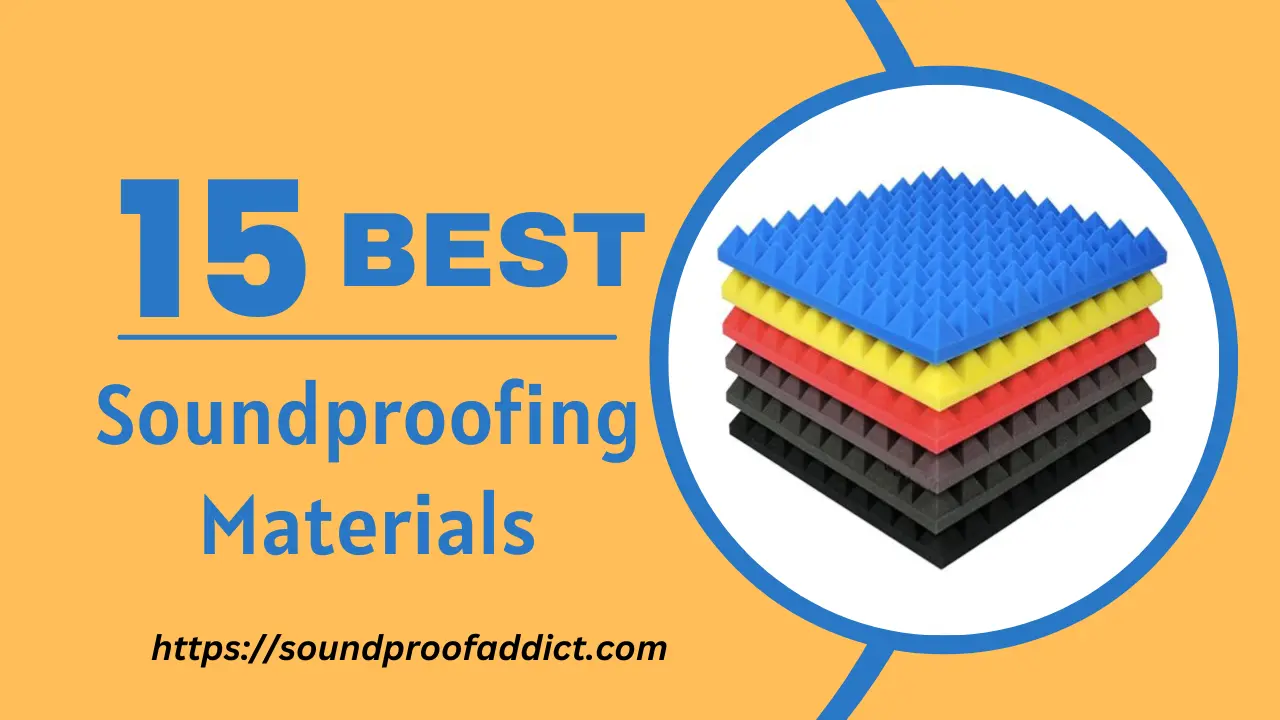
Here is the list of 15 effective, best and cheap soundproofing materials that are ideal for soundproofing.
So, without wasting any more time, let’s get straight to the point!
| Soundproofing Materials | Description | Effectiveness | Price Range | Recommended Product |
|---|---|---|---|---|
| 1. Acoustic Foam Panels | Absorb sound waves; reduce echo and reverberation | Good for absorption, not for blocking | $10 – $50 | TroyStudio Acoustic Studio Absorption Panel |
| 2. Soundproof Curtains | Block sound and regulate temperatures; easy to install | Effective at blocking sound | $30 – $150 | H.VERSAILTEX Patio Curtains for Sliding Door |
| 3. Soundproof Blanket | Versatile and used in studios; reduces sound levels significantly | Effective at reducing noise | $50 – $150 | US Cargo Control Mega Mover Moving Blankets |
| 4. Soundproof Drywall | Effective for walls, ceilings, and doors; contains viscoelastic material | Highly effective at blocking sound | $15 – $60 per panel | Available at local hardware stores or HomeDepot |
| 5. Acoustic Mineral-Wool | High-density insulation for walls and ceilings; absorbs sound waves | Effective at absorbing sound | $1.40 – $2.10 per sq. ft. | Roxul Mineral Wool Insulation |
| 6. Mass Loaded Vinyl | Reflects and absorbs sound; versatile material for walls, ceilings, and doors | Highly effective at blocking sound | $2 – $4 per sq. ft. | Noise Grabber Mass Loaded Vinyl |
| 7. Anti-Vibration Floor Mats | Absorb vibrations; ideal for appliances and floors | Effective for floor soundproofing | $9 – $25 per sq. ft. | RevTime Anti-Vibration Mats |
| 8. WeatherStrip | Seals gaps around doors and windows; reduces rattling noise | Effective at sealing gaps | $10 – $20 | Fowong White Door Weather Stripping |
| 9. Furniture & Household Items | Mass-rich objects that absorb sound waves; fill empty spaces | Moderately effective at reducing echo | – | – |
| 10. Door Sweep | Seals gaps at the bottom of doors; prevents noise from entering | Effective at sealing door gaps | $7 – $27 | MAXTID Adjustable Door Draft Stopper |
| 11. Green Glue Compound | Used for attaching drywall sheets and sealing gaps; highly effective | Highly effective at reducing noise | $20 – $23 per tube | Green Glue Noise-Proofing Compound |
| 12. Green Glue Sealant | Seals gaps and cracks; slightly effective at absorbing noise | Effective at sealing gaps | $95 per 6-pack | Green Glue Noiseproofing Sealant |
| 13. Putty Pads | Acoustic sealant for electrical outlets; prevents fire and provides some soundproofing benefits | Effective at sealing electrical outlets | $5 – $8 per pad | Sound and Fire Rated Acoustical Putty Pads |
| 14. Soundproofing Wallpaper | Made of paper; affordable option for reducing noise | Moderately effective at reducing noise | $15 – $50 per roll | Peel and Stick 3D, White Brick Wallpaper |
| 15. Sound-Deadening Paint | Contains sound-absorbing materials; can be layered for better results | Moderately effective at reducing noise | $40 – $60 per gallon | Acoustic Coat – Sound Deadening Paint – 1 Gallon |
| 16. Resilient Channel | Decouples drywall from studs; reduces vibrations and sound transmission | Effective at reducing vibrations | $2 – $4 per linear ft. | Auralex RC8 Resilient Channel |
| 17. Egg Cartons | Made of paper or foam; affordably reduce echoes and minor noise | Limited effectiveness for soundproofing | Free (recycled) – $8-$15 per dozen | Biodegradable Pulp Fiber Egg Flats |
1: Acoustic Foam Panels
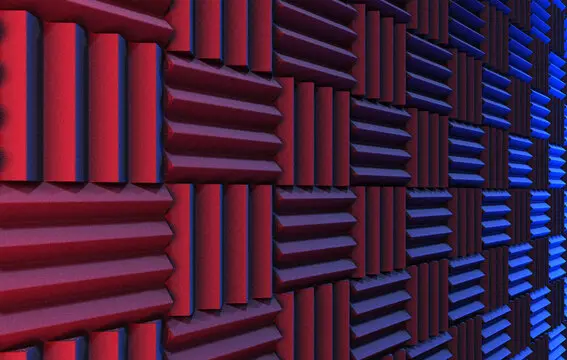
- Type of material: Sound absorbing
- Effectiveness (6/10): Good at absorbing mid to high-frequency sounds, like echoes and reverberations. However, they are not as effective for low-frequency sounds.
- Price range: $10 – $50
- Ease of installation (9/10): Super easy to install. Most of the time, it’s just a matter of sticking them to the walls.
- Best for: Reducing echoes and reverberation within a room
- Cons: Over time, acoustic foam panels may wear down.
- Where to use: Home studios, offices, home theaters, gaming room
Acoustic foam panel is a highly popular soundproofing material. They are made up of polyurethane and work by absorbing sound waves that come into contact with their surfaces.
However, keep in mind that acoustic foam panels are not a sound-blocking material, they are just good at absorbing sound and reducing reverberation.
3: Soundproof Curtains
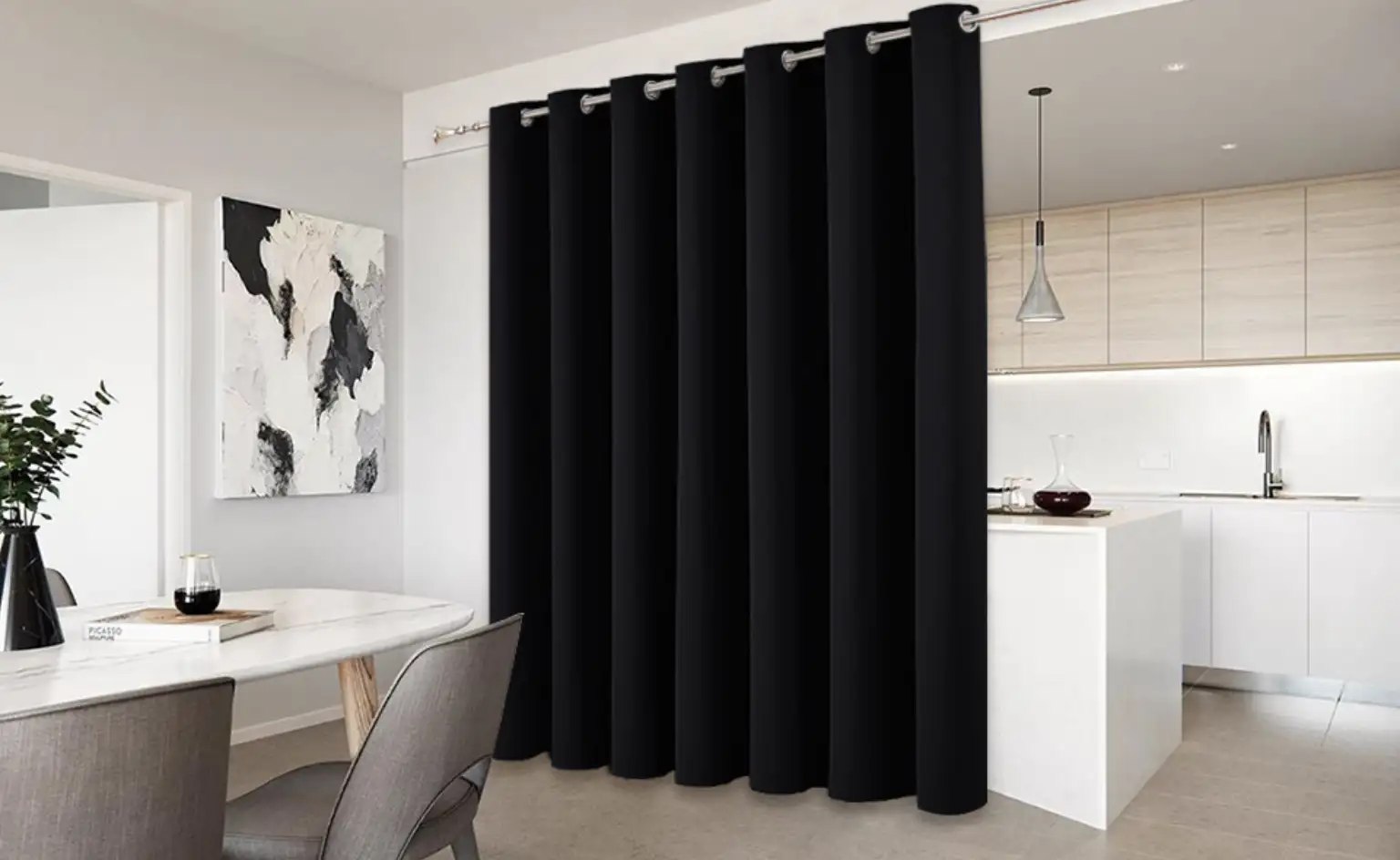
- Type of material: Sound absorbing
- Effectiveness (8/10): They can reduce noise from one side to another by up to 29 db.
- Price range: $30–$150
- Ease of installation (9/10): Installing soundproofing curtains is a breeze. Most are designed with simple hanging mechanisms.
- Best for: Reducing noise transfer from one side to another
- Cons: Not very effective reducing low frequency sound
- Where to use: On doors and windows
Soundproof curtains is an effective and affordable soundproofing material that is ideal for soundproofing doors, windows and walls as well.
According to architectureanddesign.com.au, soundproof curtains have an NRC rating of of up to 0.75, which means they can tackle up to 70 to 75% of the sound.
Not only do they block out noise, but they also help protect your space from outside temperatures.
3: Soundproof Blanket
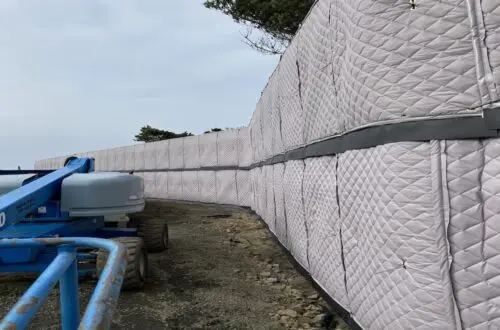
- Type of material: Sound absorbing
- Effectiveness (8.2/10): These blankets are great at absorbing and dampening sound, especially mid to high-frequency noises.
- Price range: $50–$150
- Ease of installation (7/10): Most come with grommets or hooks, allowing for easy hanging on walls or other surfaces.
- Best for: Reducing noise transfer from one side to another and reducing echoes and reverberation within a space.
- Cons: While effective, soundproofing blankets might not be the most aesthetically pleasing option and also can be a bit expensive
- Where to use: Can be used on some types of doors, walls of studio and home theaters
My audio editor has been in many studios, and he told me that: most of the studios I’ve visited are using soundproof blankets over their doors and windows. They are also not expensive, their price ranges anywhere between $50 to up to $150.
And, according to soundproofcentral.com, soundproof curtains can reduce the sound level by up to 80%, which is quiet impressive!
4: Soundproof Drywall
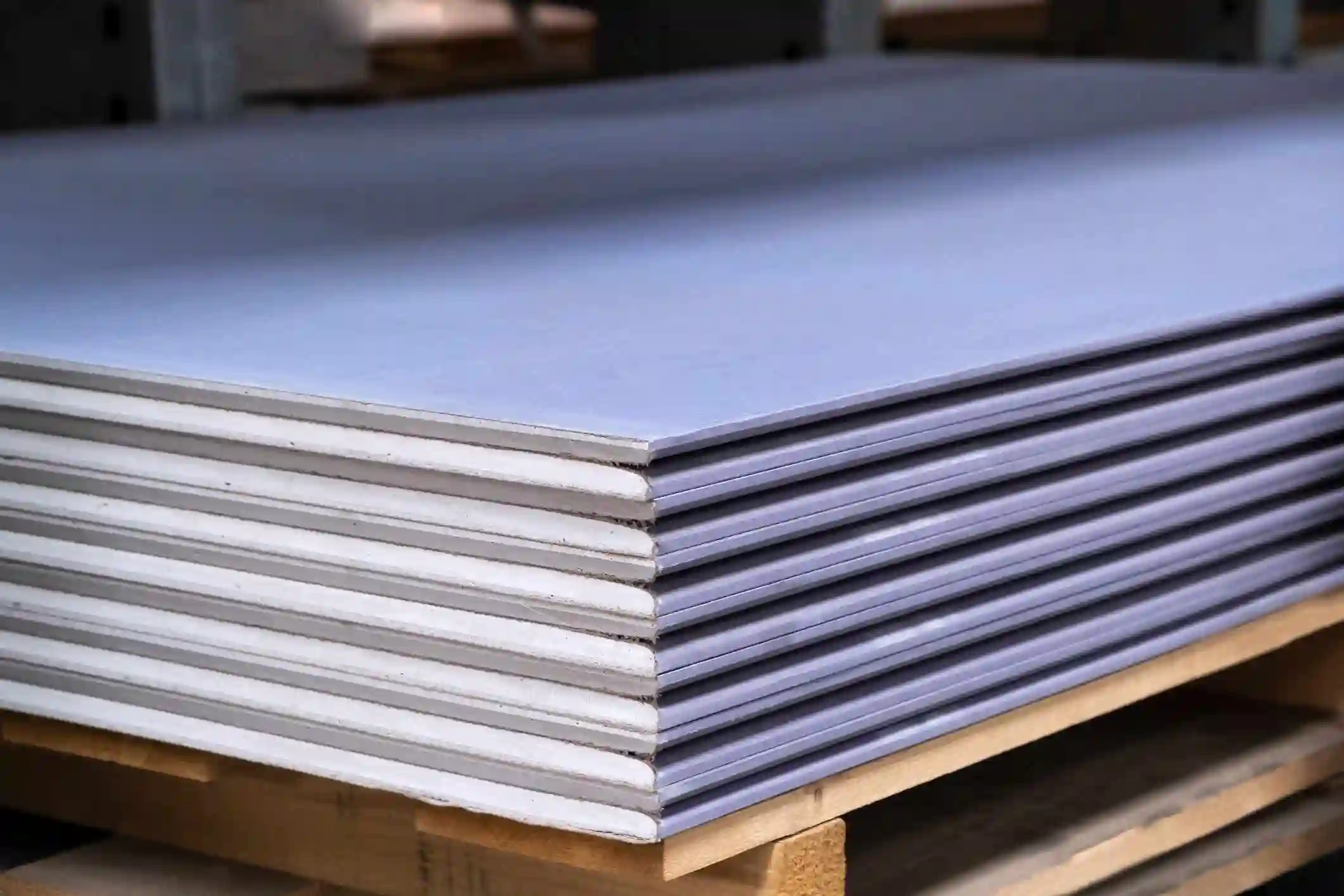
- Type of material: Sound dampening
- Effectiveness (9/10): Drywall is effective in reducing both airborne and impact noises. It absorb and dampen sound, making it an excellent choice for creating quieter spaces.
- Price range: $15–$60 per panel
- Ease of installation (6/10): Installing drywall can be a bit more involved.
- Best for: Reducing noise transfer from one side to another
- Cons: The installation process can be more complex, potentially requiring professional help. Other than that, it might be a drawback for budget-conscious individuals.
- Where to use: Can be use to soundproof walls, ceilings and even floors.
Soundproof drywall is typically made by sandwiching a layer of viscoelastic material, such as gypsum or cellulose, between two layers of heavy paper or gypsum board.
This viscoelastic layer provides sound-damping properties, making it more effective at blocking sound.
If you want to soundproof your basement ceiling even with a low-budget, read our post: How to Soundproof a basement ceiling?
5: Acoustic Mineral-Wool Insulation
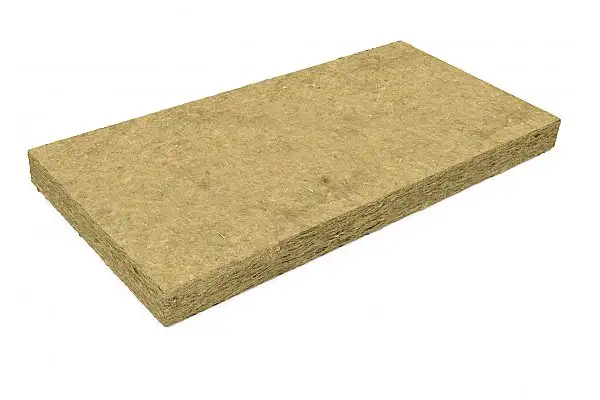
- Type of material: Sound absorbing
- Effectiveness (9/10): It is a powerhouse when it comes to sound absorption. It performs exceptionally well across a broad range of frequencies, including those pesky low-frequency sounds.
- Price range: $1.40 – $2.10 per sq. ft. (source)
- Ease of installation (7/10): They are super easy to install. It just requires careful placement within walls or ceiling structures.
- Best for: Creating a well-balanced acoustic space
- Cons: Expensive
- Where to use: Perfect for soundproofing ceiling and walls
We’ve tested its effectiveness and compared it to the cheapest soundproofing material – Acoustic Foam Panels.
The mineral wool insulation reduced the noise level by 17.6dB, while the foam panels reduced only 4dB, this is not bad but not good either, but the main thing here is that the foam compared to the mineral wool insulation panels are cheap.
6: Mass-Loaded Vinyl
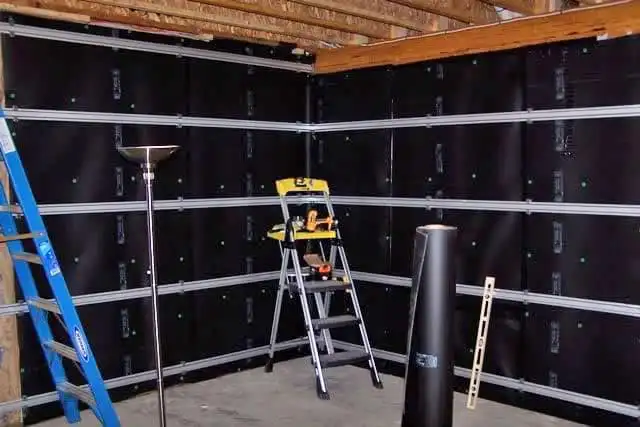
- Type of material: Sound blocking
- Effectiveness (9/10): MLV is a heavyweight champion in blocking sound. It effectively reduces airborne noise and is particularly efficient in handling low-frequency sounds.
- Price range: $2 – $4 per sq. ft.
- Ease of installation (6/10): Installing MLV can be a bit more involved than, say, sticking acoustic foam panels on the wall. It’s requires fastening with nails, screws, or staples.
- Best for: Creating sound barrier
- Cons:
- On the downside, Mass Loaded Vinyl tends to be pricier compared to some other soundproofing materials.
- And the installation can be a bit complex
- Where to use: Suitable for soundproofing ceiling, walls and can also be use in construction projects.
7: Anti-Vibration Floor Mats
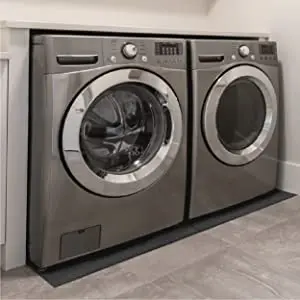
- Type of material: Sound dampening
- Effectiveness (9/10): Excellent at absorbing and dampening vibrations. They provide a solid defense against machinery or equipment-generated vibrations.
- Price range: $9 – $25 per sq. ft.
- Ease of installation (10/10): Installing these mats is generally straightforward. All you need to do is just place underneath the machinery.
- Best for: Reducing machinery noises
- Cons: VERY expensive
- Where to use: Underneath machinery and is also best for under exercise equipment like treadmills or weight benches to ensure a quieter workout environment.
I tested the effectiveness of anti-vibration floor mats by placing a noise level tester about 1 foot above the cement floor and set up a camera to capture the results.
Then, I dropped a steel ball onto the floor without any product, and the noise level reached 75dB. After that, I laid the anti-vibration floor mat and dropped the same steel ball again. And the noise level comes down to 51.5dB, a massive difference of 23.5dB.
8: WeatherStrip
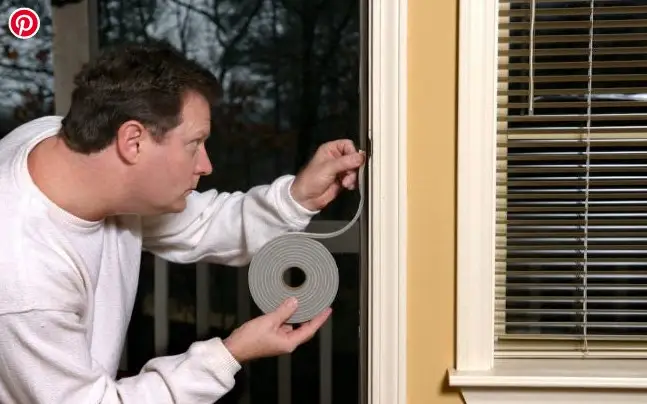
- Type of material: Sound blocking
- Effectiveness (8/10): Weatherstrips are effective in sealing gaps and providing a good barrier against external noise.
- Price range: $10 – $20
- Ease of installation (10/10): Installing weatherstrips is usually a straightforward DIY task. Most types come with adhesive backing or are easily attached with screws or nails.
- Best for: sealing gaps
- Cons: Over time, weatherstrips can experience wear and tear.
- Where to use: they are most commonly used around doors and windows to prevent drafts, enhance energy efficiency and block noise.
9: Furniture & Households Items
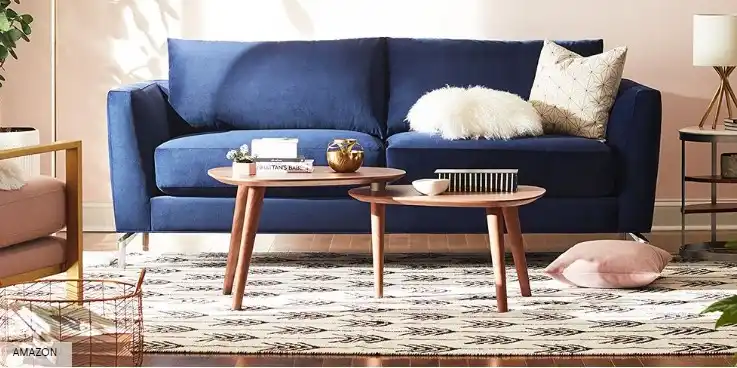
It may be surprising to know that even household items can offer soundproofing benefits, but these items are not specifically counted as soundproofing material.
However, you need to do it strategically to get a noticeable result, and I am pretty sure there must be a question floating in your mind and that is- how do household items help in soundproofing?
So furniture like chairs, sofas and bookcases are mass rich (heavy) objects and we all know that mass is one of the primary factors on which soundproofing depends and for this reason they are good at absorption. It helps to absorb sound waves and helps block transmission around a space.
And that’s what I personally observed as when the construction of the house was completed and all the rooms as well as the ceiling were painted, I saw a lot of resonance.
But after we moved furniture and other items in that room, I found the room was less reverberation than before.
And if your rooms are very empty and have a lot of flat surfaces that it’s easy to bounce sound off of, there’s no point in doing anything about it, killing the sound naturally. Using furniture and household items throughout the home will make more difference than you might think.
But do you know, which furniture and household work great in soundproofing? Probably, not, right? so here is a list of households that can work for soundproofing:
- Blankets
- Cushions and Pillows
- Bookshelves, sofas and Dresser
- Mattress
- Carpets and Rugs
- Exercise Mats
- Cardboard Boxes
- Bean bags
10: Door Sweep
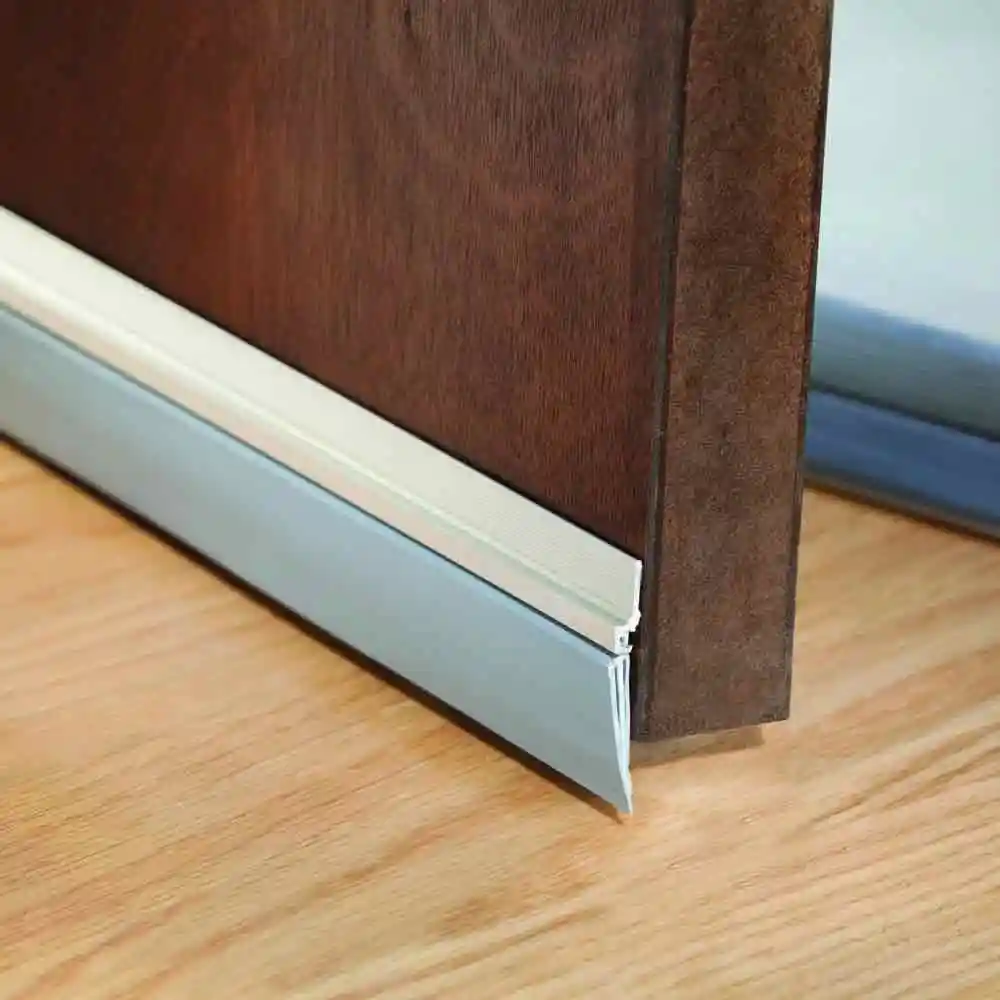
- Type of material: Sound blocking
- Effectiveness (8/10): Door sweeps are quite effective in reducing noise, and preventing dust and insects from entering your home.
- Price range: $7 – $27
- Ease of installation (10/10): You just need to peel of the backing and stick it to the bottom of the door.
- Best for: sealing gaps on the bottom of the door
- Cons:
- Where to use: on the bottom of doors
11: Green Glue Noise-Proofing Compound
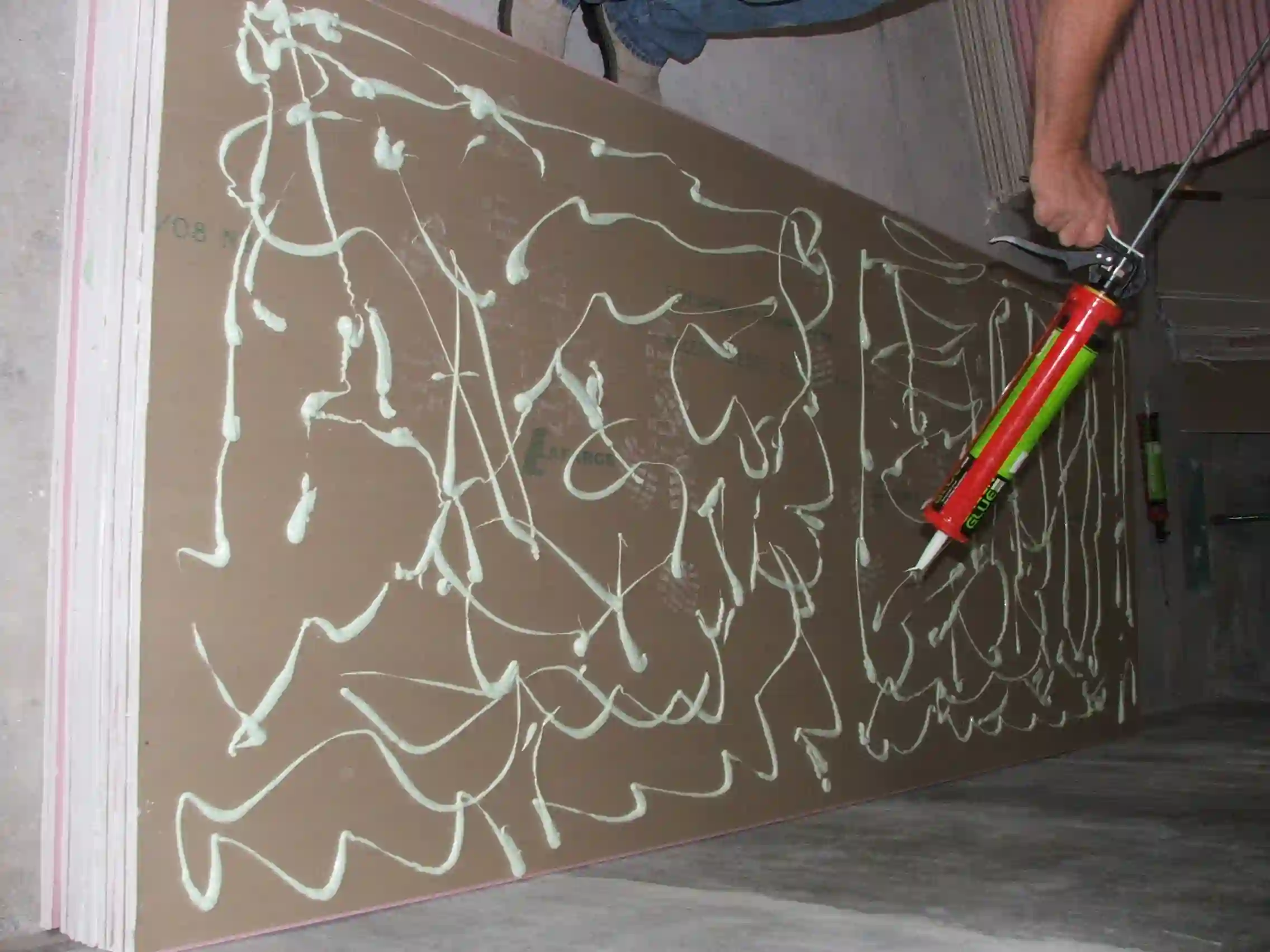
- Type of material: Sound dampening
- Effectiveness (9/10): green glue is highly effective at damping sound vibrations and preventing them from traveling through.
- Price range: $20 – $23 per tube
- Ease of installation (8/10): It typically comes in tubes, making it easy to dispense and spread between layers of drywall.
- Best for: attaching drywalls
- Cons: Green Glue requires time to cure.
- Where to use: for attaching two layers of drywall.
12: Green Glue Noise-Proofing Sealant
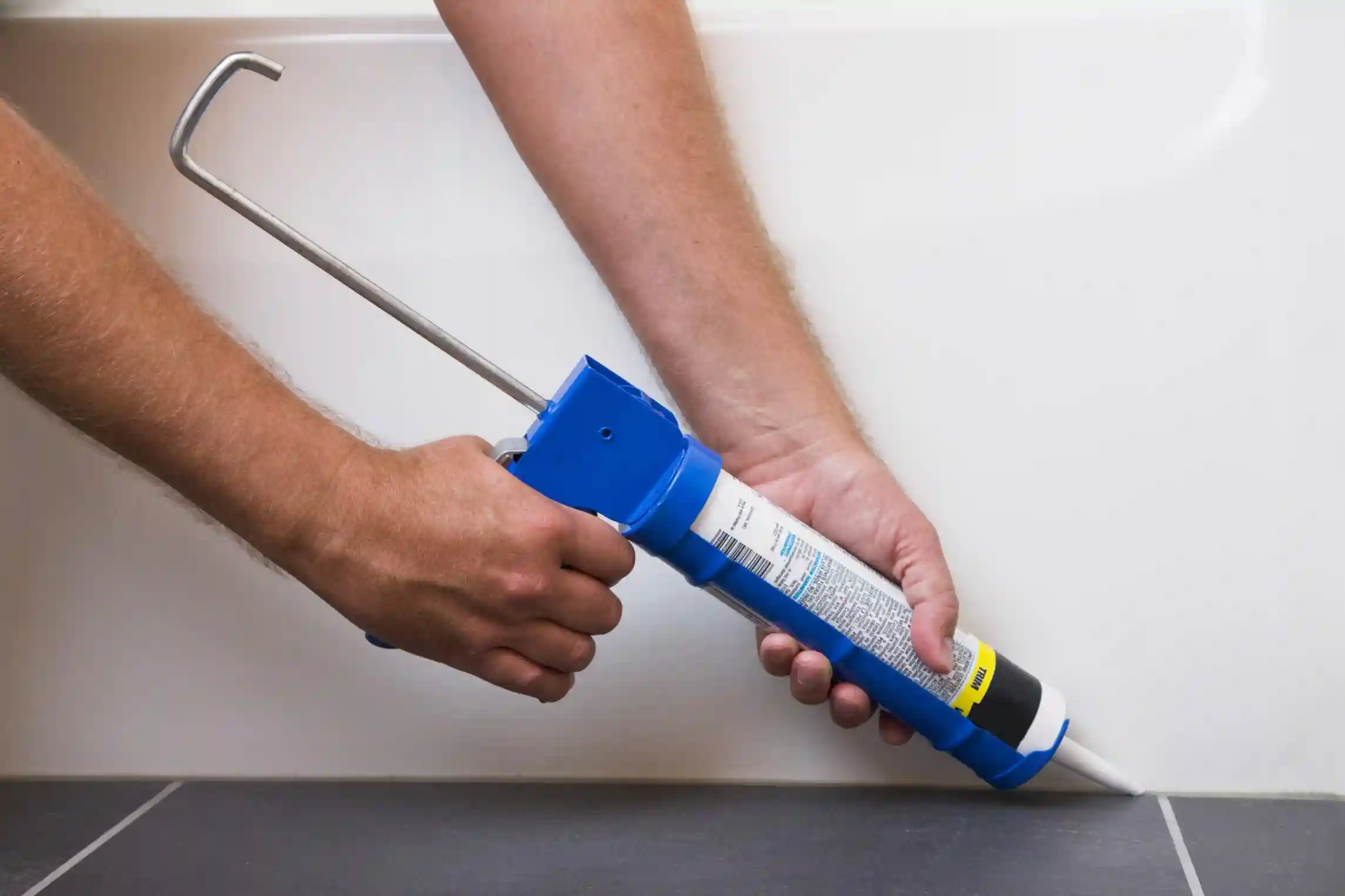
- Type of material: Sound blocking and dampening
- Effectiveness (9/10): green glue sealant are good at sealing tiny gaps and blocking noise transmission
- Price range: $95 per 6-pack
- Ease of installation (8/10): It also comes in tubes, and used in the same way as green glue compound.
- Best for: sealing tiny gaps around doors and windows
- Cons: Green Glue requires some time to cure fully and it may not provide comprehensive soundproofing on its own.
- Where to use: to seal gaps around the doors and windows.
13: Putty Pads
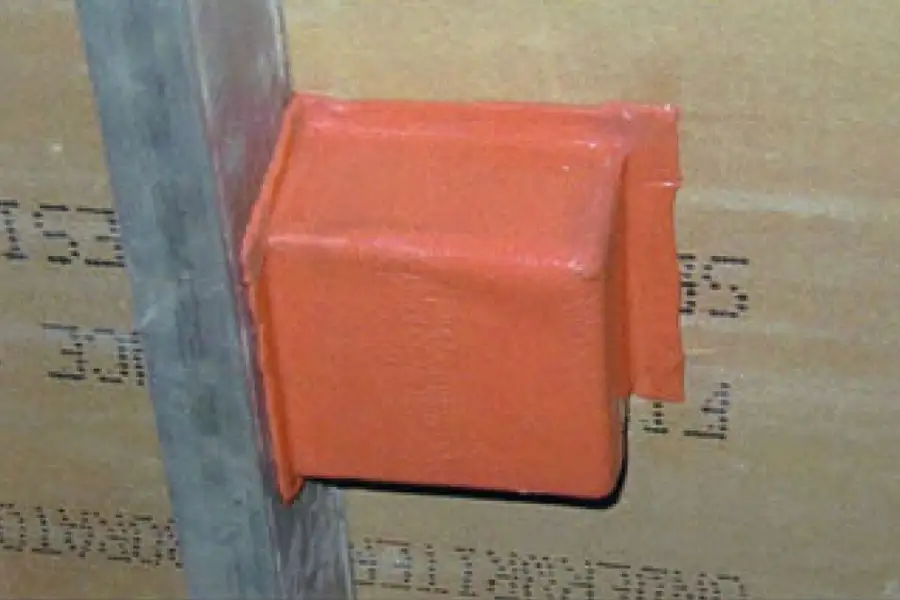
- Type of material: Sound dampening
- Effectiveness (8/10): effectively dampen and reduce the noise through
- Price range: $5 – $8 per pad
- Ease of installation (10/10): They usually come in pre-cut sheets, making it easy to apply directly to electrical boxes, outlets, or other wall penetrations.
- Best for: soundproofing electrical boxes
- Cons: The putty can be sticky and messy to handle during installation, requiring care to avoid any residue on surfaces.
- Where to use: Putty pads are best applied around electrical outlets and can also be used on ceilings around light fixtures or any other wall penetrations.
I’ve personally tested it, and got a sexy noise reduction of 27 decibels. I was totally surprised by this. Well, if you haven’t set it up properly, it might not make a huge difference to some people.
Recommended to read: https://www.familyhandyman.com/article/do-putty-pads-help-with-soundproofing/
14: Soundproofing Wallpaper
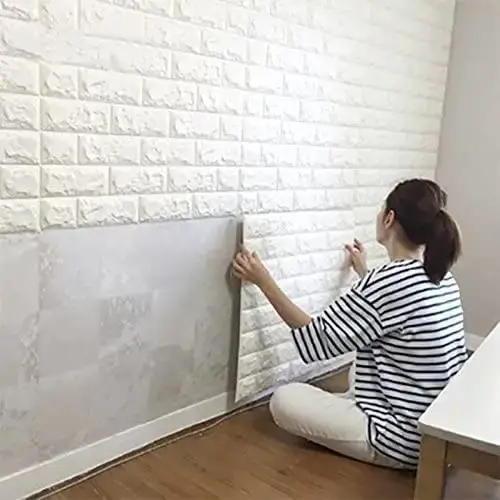
- Type of material: Sound absorbing
- Effectiveness (4/10): absorb and reduce little bit sound. I found a noise reduction of just 6 dB.
- Price range: $15 – $50 per roll
- Ease of installation (9/10): they are super easy to install
- Best for: reducing echoes and reverberation in a room
- Cons: they are very poor at reducing noise
- Where to use: on walls
15: Sound-deadening Paint

- Type of material: Sound deadening
- Effectiveness (6/10): absorb and deaden sound slightly effectively in vehicles
- Price range: $40 – $60 per gallon
- Ease of installation (10/10): you just need to coat the wall with it
- Best for: soundproofing vehicles
- Cons: expensive, are not very effective, require additional coats to get the desired noise reduction
- Where to use: ideal for bedrooms, home offices, and living areas and are also best for vehicles.
My Final Thoughts
There are a variety of ways to soundproof your home, the best method depends on your budget and the level of noise you’re trying to block out.
If you’re looking for a quick and easy solution, foam panels and egg cartons can be great options. For a more permanent solution, you can install mass loaded vinyl or soundproof drywall.
If you’re dealing with particularly loud noise, you may need to combine multiple soundproofing methods to achieve the desired results.
Well that’s all, for this post, 15 Best Cheap Soundproofing Materials, we have put 100% effort and time to make this post as epic and actionable as possible for you, so that you can get the best and accurate information.
And all the soundproofing materials on this list are tested and proven, so it’s undoubtedly legendary, by the way I always try to include products that have been used by our team, my friends or anyone else I know.
